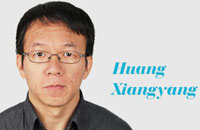China should adopt a new growth model
By Zhang Monan (China Daily) Updated: 2012-11-03 07:53China has to adjust its workforce, demand and industries if it wants to move toward a higher economic development level
Low cost-driven growth has seen China make rapid economic and social progress in the past decades, but now that it has reached a certain level of development it should transform its economic growth model.
China's per capita GDP was $5,414 in 2011, according to International Monetary Fund data. This means its economic and social development has entered a critical transitional stage. Economists believe that a country is on the verge of advancing from a middle-income to high-income society when its per capita GDP reaches the watershed mark of $4,000, which is bound to give rise to some changes in its economic and social development.
In the 1960s and 1970s, the per capita GDP of some countries in the West, Latin America and East Asia crossed $4,000, but their development in the years that followed were different because they adopted different development strategies.
Japan, the Republic of Korea and some developed Western countries succeeded in striding over the "critical threshold" by changing their industrial structures, developing some heavy industries and pushing for an export-substitution strategy. With these efforts, they transformed from a labor-intensive to technology-intensive economy and witnessed fast economic growth for more than a decade. As a result, the per capita GDP of some of those countries crossed $5,000, even $10,000, in the coming years.
However, things were rather different in some Latin American countries that enjoyed a similar development level in the 1960s and 1970s. The contradictions that marked their rapid development erupted when their per capita GDP dropped to about $3,000. They were overwhelmed by the contradictions because they failed to change some of their systems and institutions, which also caused their economic growth to decline sharply or become static.

I’ve lived in China for quite a considerable time including my graduate school years, travelled and worked in a few cities and still choose my destination taking into consideration the density of smog or PM2.5 particulate matter in the region.











